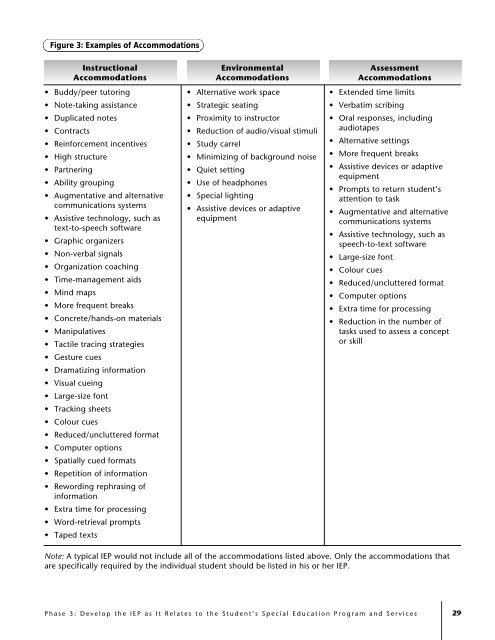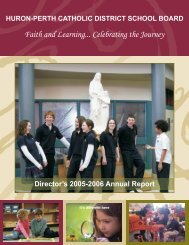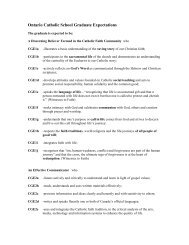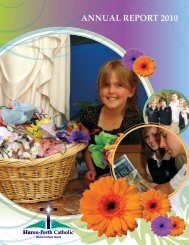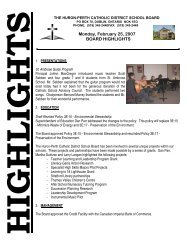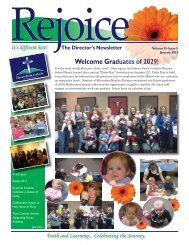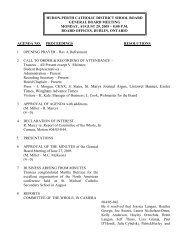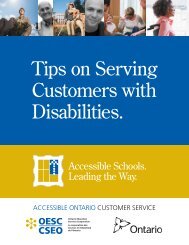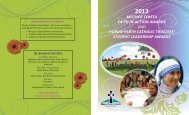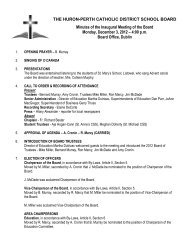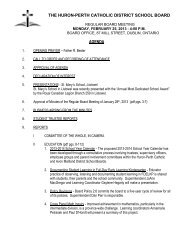The Individual Education Plan (IEP) - A Resource Guide, 2004
The Individual Education Plan (IEP) - A Resource Guide, 2004
The Individual Education Plan (IEP) - A Resource Guide, 2004
Create successful ePaper yourself
Turn your PDF publications into a flip-book with our unique Google optimized e-Paper software.
Figure 3: Examples of Accommodations<br />
Instructional<br />
Accommodations<br />
• Buddy/peer tutoring<br />
• Note-taking assistance<br />
• Duplicated notes<br />
• Contracts<br />
• Reinforcement incentives<br />
• High structure<br />
• Partnering<br />
• Ability grouping<br />
• Augmentative and alternative<br />
communications systems<br />
• Assistive technology, such as<br />
text-to-speech software<br />
• Graphic organizers<br />
• Non-verbal signals<br />
• Organization coaching<br />
• Time-management aids<br />
• Mind maps<br />
• More frequent breaks<br />
• Concrete/hands-on materials<br />
• Manipulatives<br />
• Tactile tracing strategies<br />
• Gesture cues<br />
• Dramatizing information<br />
• Visual cueing<br />
• Large-size font<br />
• Tracking sheets<br />
• Colour cues<br />
• Reduced/uncluttered format<br />
• Computer options<br />
• Spatially cued formats<br />
• Repetition of information<br />
• Rewording rephrasing of<br />
information<br />
• Extra time for processing<br />
• Word-retrieval prompts<br />
• Taped texts<br />
Environmental<br />
Accommodations<br />
• Alternative work space<br />
• Strategic seating<br />
• Proximity to instructor<br />
• Reduction of audio/visual stimuli<br />
• Study carrel<br />
• Minimizing of background noise<br />
• Quiet setting<br />
• Use of headphones<br />
• Special lighting<br />
• Assistive devices or adaptive<br />
equipment<br />
Assessment<br />
Accommodations<br />
• Extended time limits<br />
• Verbatim scribing<br />
• Oral responses, including<br />
audiotapes<br />
• Alternative settings<br />
• More frequent breaks<br />
• Assistive devices or adaptive<br />
equipment<br />
• Prompts to return student’s<br />
attention to task<br />
• Augmentative and alternative<br />
communications systems<br />
• Assistive technology, such as<br />
speech-to-text software<br />
• Large-size font<br />
• Colour cues<br />
• Reduced/uncluttered format<br />
• Computer options<br />
• Extra time for processing<br />
• Reduction in the number of<br />
tasks used to assess a concept<br />
or skill<br />
Note: A typical <strong>IEP</strong> would not include all of the accommodations listed above. Only the accommodations that<br />
are specifically required by the individual student should be listed in his or her <strong>IEP</strong>.<br />
Phase 3: Develop the <strong>IEP</strong> as It Relates to the Student’s Special <strong>Education</strong> Program and Services<br />
29


